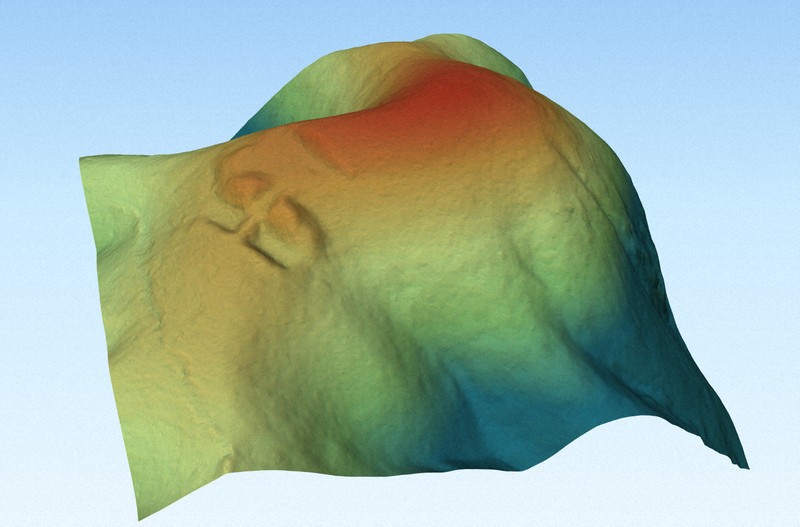Discovery of an Ancient Castle in Hyogo Prefecture
In the mountains of Hyogo Prefecture, a small and old castle was recently discovered. This remarkable find was made possible through the use of artificial intelligence (AI), marking a new era in archaeological exploration. The discovery took place in March, and it has sparked significant interest among researchers and historians.
The castle is believed to have been constructed around 700 years ago, during the Nanbokucho period, which spanned from 1336 to 1392. It is situated atop a mountain, approximately one hour away from the nearest road on foot. Due to its strategic location and the surrounding topography, experts think the castle served as a lookout point to monitor the surrounding area.
To locate the castle, researchers utilized advanced 3D maps provided by Hyogo Prefecture. These maps offer a detailed representation of the terrain, allowing for a more accurate analysis of the landscape. AI played a crucial role in this process by first scanning the maps to identify potential sites of ancient Japanese tombs known as “kofun.” As scientists examined the locations suggested by the AI, they uncovered several new sites, including the newly discovered castle.
Yuichi Takata, the lead researcher, expressed his excitement about the findings, stating, “There may be even more old castles in this area. We hope this will contribute to a better understanding of our history.”
The integration of AI and 3D mapping technology is revolutionizing how ancient sites are identified in Japan’s mountainous regions. Traditionally, such discoveries required extensive fieldwork and manual searches, which could be time-consuming and challenging. However, with the availability of clear map data, researchers can now locate these sites more efficiently.
This innovative approach not only aids in historical research but also plays a vital role in urban planning and infrastructure development. By identifying ancient sites before constructing new roads or towns, authorities can ensure that these historical landmarks are preserved and protected.
Key Terms and Definitions
- Castle: A large, fortified structure where people lived and engaged in battles in the past.
- Researcher: An individual who conducts careful studies on a particular subject.
- Map data: Information that illustrates details of roads or land on a map.
- Site: A location where something significant was built or occurred in the past.
- Lookout: A high vantage point used for observing potential dangers or approaching individuals.
- Ancient: Extremely old, originating from a long time ago.
- Tomb: A burial site for deceased individuals.
- Three-dimensional (3D): A representation that includes height, width, and depth, providing a more realistic view.
- Period: A specific duration of time within a historical context.
- Prefecture: A regional administrative division in Japan, each with its own local government.
Implications of the Discovery
The discovery of this ancient castle highlights the importance of using modern technology in archaeological research. By leveraging AI and 3D mapping, researchers can uncover hidden historical treasures that might otherwise remain undiscovered. This method not only accelerates the process of finding ancient sites but also enhances the accuracy of historical records.
Moreover, this approach encourages collaboration between different fields, such as technology, archaeology, and urban planning. It allows for a more comprehensive understanding of the past while ensuring that future developments respect and preserve historical heritage.
As technology continues to advance, it is likely that more ancient sites will be uncovered, offering valuable insights into Japan’s rich history. The use of AI and 3D mapping represents a significant step forward in the field of archaeology, opening up new possibilities for exploration and discovery.







